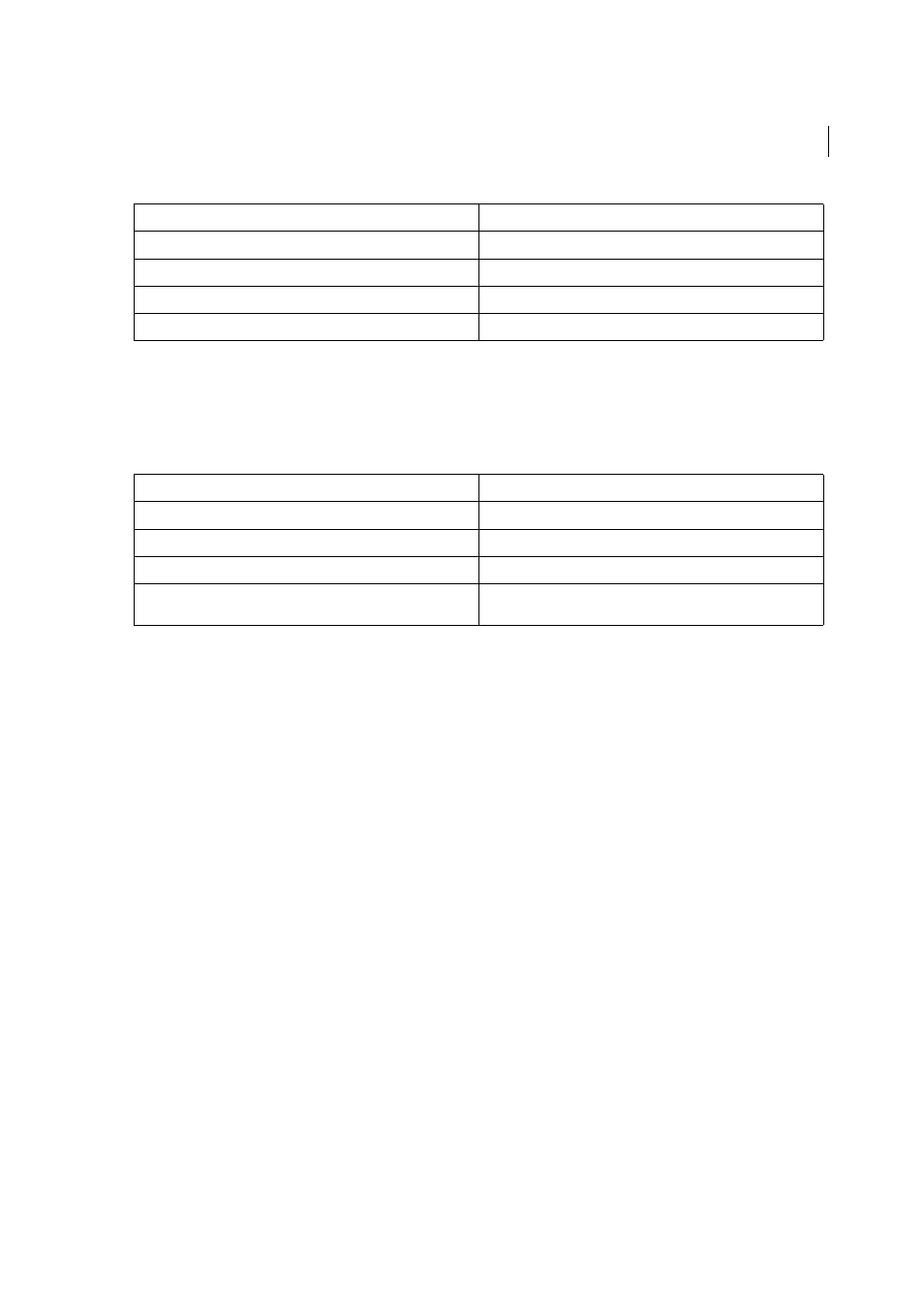About defining a dreamweaver site – Adobe Dreamweaver CC 2015 User Manual
Page 550

543
Dynamic sites, pages and web forms
Last updated 6/3/2015
To test the web server, place a test HTML page in the default root folder and attempt to open it by entering the page’s
URL in a browser. The URL comprises the domain name and the filename of the HTML page, as follows:
www.example.com/testpage.htm.
If the web server is running on your local computer, you can use localhost instead of a domain name. Enter one of the
following localhost URLs to match your web server:
Note: By default the ColdFusion web server runs on port 8500 and the Apache web server for Windows runs on port 80.
If the page doesn’t open as expected, check for the following errors:
• The web server is not started. Consult the web server’s documentation for starting instructions.
• The file does not have an .htm or .html extension.
• You entered the page’s file path (for example, c:\ColdFusion8\wwwroot\testpage.htm), not its URL (for example,
http://localhost:8500/testpage.htm), in the browser’s address text box.
• The URL contains a typing mistake. Check for errors and make sure the filename is not followed by a slash, such as
http://localhost:8080/testpage.htm/.
After creating a root folder for your application, define a Dreamweaver site to manage your files.
About defining a Dreamweaver site
After configuring your system to develop web applications, define a Dreamweaver site to manage your files.
Before you start, make sure you meet the following requirements:
• You have access to a web server. The web server can be running on your local computer, on a remote computer such
as a development server, or on a server maintained by a web hosting company.
• An application server is installed and running on the system running your web server.
• You created a root folder for your web application on the system running your web server.
Defining a Dreamweaver site for your web application consists of three steps:
1. Define a local folder
Web server
Default root folder
ColdFusion 8
\ColdFusion8\wwwroot
IIS
\Inetpub\wwwroot
Apache (Windows)
\apache\htdocs
Apache (Macintosh)
Users:MyUserName:Sites
Web server
Localhost URL
ColdFusion 8
http://localhost:8500/testpage.htm
IIS
http://localhost/testpage.htm
Apache (Windows)
http://localhost:80/testpage.htm
Apache (Macintosh)
http://localhost/~MyUserName/testpage.htm (where MyUserName is
your Macintosh user name)
